
Electronic Journal of Structural Engineering
Scope & Guideline
Innovative Insights for Modern Engineering Challenges
Introduction
Aims and Scopes
- Structural Analysis and Design:
The journal emphasizes rigorous analysis and design methods for various structural systems, including traditional and innovative materials, with a focus on enhancing safety, performance, and sustainability. - Material Properties and Innovations:
Research on the properties of traditional and novel materials, such as concrete, steel, and composites, is a staple, highlighting advancements like high-performance concrete, graphene oxide applications, and eco-friendly materials. - Seismic and Dynamic Analysis:
A significant focus is placed on understanding the behavior of structures under seismic loads and dynamic conditions, employing advanced numerical simulations and experimental methods to improve resilience. - Sustainability and Eco-friendly Solutions:
The journal promotes studies that explore sustainable construction practices, including the use of recycled materials and innovative building techniques, to reduce environmental impact. - Construction Methods and Management:
Research on construction methodologies, project management, and the use of modern technologies like BIM (Building Information Modeling) is featured, addressing efficiency and safety in construction processes.
Trending and Emerging
- Advanced Computational Methods:
There is a growing trend towards the use of sophisticated computational techniques, such as machine learning and nonlinear finite element analysis, to predict structural performance and optimize designs. - Sustainable Construction Practices:
Research focusing on sustainability, including the application of alternative materials like hemp and the development of eco-friendly composites, is increasingly prevalent, reflecting a broader industry movement towards greener practices. - Modular and Prefabricated Structures:
The exploration of modular construction techniques and prefabricated systems is on the rise, driven by the need for efficiency and rapid construction methods in response to urbanization and housing demands. - Resilience Engineering:
Recent publications indicate a heightened emphasis on resilience in structural design, particularly in relation to natural disasters, with studies assessing the performance of structures under extreme conditions. - Innovative Reinforcement Techniques:
The use of advanced reinforcement methods, such as fiber-reinforced polymers and other composite materials, to enhance structural performance and longevity has emerged as a key area of interest.
Declining or Waning
- Traditional Materials Research:
There has been a noticeable decrease in studies focused solely on traditional materials like plain concrete or standard steel, as the field shifts toward innovative composites and sustainable materials. - Basic Structural Behavior Studies:
Research that primarily investigates fundamental structural behaviors without integration of advanced modeling techniques or contemporary applications has become less frequent, indicating a move towards more applied and complex studies. - Historical Structural Analysis:
Papers focusing on the historical analysis of existing structures or traditional construction methods have waned, likely overshadowed by the demand for innovative solutions and modern engineering challenges.
Similar Journals
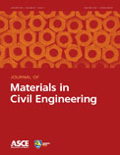
JOURNAL OF MATERIALS IN CIVIL ENGINEERING
Exploring the Future of Building MaterialsJOURNAL OF MATERIALS IN CIVIL ENGINEERING is a highly regarded publication within the field of civil engineering, published by the ASCE-American Society of Civil Engineers. This journal, which has been actively contributing to the discourse in building and construction materials since 1989, has established itself as a vital resource for researchers and practitioners alike, evidenced by its impressive Q1 rankings across multiple categories, including Building and Construction, Civil and Structural Engineering, Materials Science, and Mechanics of Materials as of 2023. With a strong focus on innovation and application in materials technology, it provides insights that are paramount for advancing practices in civil engineering. The journal's commitment to disseminating high-quality research is reflected in its exceptional standing within Scopus, where it ranks in the top quartile of its respective fields. Although not an open-access journal, it remains an essential platform for disseminating impactful research findings and fostering professional development in the materials science community. For more information or to explore the latest publications, researchers can access the journal through the ASCE library.
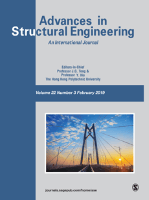
ADVANCES IN STRUCTURAL ENGINEERING
Advancing the Frontiers of Engineering ResearchADVANCES IN STRUCTURAL ENGINEERING, published by SAGE PUBLICATIONS INC, is a leading journal dedicated to the advancement of knowledge in the fields of Building and Construction, as well as Civil and Structural Engineering. With a solid impact factor and a commendable Scopus ranking (Rank #60 in Building and Construction, Rank #105 in Civil and Structural Engineering), this journal stands at the forefront of academic research, providing a platform for high-quality articles that contribute significantly to the discipline. Covering a range of topics from innovative construction techniques to sustainable engineering practices, the journal aims to foster collaborative dialogue among researchers, industry professionals, and students alike. As of 2023, it boasts impressive category quartiles, ranking Q1 in Building and Construction and Q2 in Civil and Structural Engineering. ADVANCES IN STRUCTURAL ENGINEERING is a vital resource for those looking to stay abreast of emerging trends and groundbreaking developments in structural engineering, promoting an environment of continuous learning and application of best practices. With a convergence of research from 1999 to 2024, the journal not only emphasizes theoretical frameworks but also bridges the gap between academia and practical application in engineering projects.
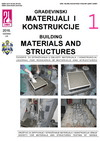
Gradevnski Materijiali I Konstrukcije-Building Materials and Structures
Transforming ideas into impactful solutions for the built environment.Gradevnski Materijiali I Konstrukcije - Building Materials and Structures is a premier open-access journal dedicated to advancing the field of construction materials and structural engineering. Published by SOC MATERIALS & STRUCTURES TESTING SERBIA, this journal provides a platform for researchers, professionals, and students to share their innovative findings and developments in building materials. With a commitment to open-access since 2012, it fosters unrestricted availability of research for a wider audience, encouraging collaboration and knowledge dissemination. The journal features a diverse range of topics, including material testing, structural integrity, and sustainable construction practices, making it a vital resource for those engaged in the design and analysis of structural components. By fostering the advancement of research and practice in this crucial sector, Gradevnski Materijiali I Konstrukcije plays an essential role in shaping the future of construction and material science.
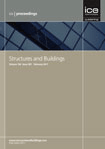
PROCEEDINGS OF THE INSTITUTION OF CIVIL ENGINEERS-STRUCTURES AND BUILDINGS
Connecting Research with Real-World ApplicationsPROCEEDINGS OF THE INSTITUTION OF CIVIL ENGINEERS-STRUCTURES AND BUILDINGS, published by Emerald Group Publishing Ltd, is a leading journal in the fields of Building and Construction and Civil and Structural Engineering. Since its inception in 1992, this journal has served as a vital platform for disseminating high-quality research and innovative practices within the industry, contributing to the advancement of engineering knowledge and its applications. With an impact factor reflective of its significant presence in the field, this publication ranks in the Q3 category, reinforcing its role as an essential resource for researchers and professionals alike, positioning it among the top journals in its category. As of 2023, it holds notable Scopus rankings, emphasizing its credibility and influence within both Building and Construction (Rank #88/223) and Civil and Structural Engineering (Rank #171/379). Researchers aiming to enhance their understanding of cutting-edge developments in civil engineering will find this journal indispensable in accessing a wealth of knowledge, methodologies, and case studies that shape the infrastructures of tomorrow.

Journal of the International Association for Shell and Spatial Structures
Championing Groundbreaking Research in Spatial SystemsJournal of the International Association for Shell and Spatial Structures (ISSN: 1028-365X, E-ISSN: 1996-9015) is a leading scholarly publication published by the International Association for Shell and Spatial Structures (IASS), based in Spain. The journal spans a remarkable history from 1969 to 2024, fostering groundbreaking research in the fields of shell and spatial structures while also contributing to broader disciplines such as arts and humanities, civil and structural engineering, and mechanical engineering. Notably, the journal has been recognized with a Q2 ranking in Arts and Humanities (Miscellaneous) and Q3 rankings in Building and Construction, Civil and Structural Engineering, and Mechanical Engineering for 2023. This positioning indicates a strong impact within its categories, enhancing the visibility of innovative research and practices. Although not labeled as open access, the journal remains a crucial resource for researchers, professionals, and students captivated by the complexities of structural design and engineering. By promoting interdisciplinary approaches and emerging technologies in structural systems, the journal serves as an indispensable platform for academic discourse and practical advancements in the field.
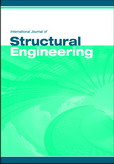
International Journal of Structural Engineering
Exploring Solutions for Modern Engineering ChallengesInternational Journal of Structural Engineering, published by InderScience Enterprises Ltd, has established itself as a vital resource in the field of civil and structural engineering. With an ISSN of 1758-7328 and an E-ISSN of 1758-7336, this journal is dedicated to disseminating high-quality research that addresses contemporary challenges and innovations in structural engineering. The journal operates under a rigorous peer-review process, ensuring that only the most impactful and relevant studies are shared with the global community. Since its inception in 2009, the journal has been recognized for its contributions, earning a ranking in Q3 for civil and structural engineering under the 2023 Category Quartiles and occupying the 40th percentile in Scopus rankings. While currently not an open-access journal, it provides access to a wide array of original papers, reviews, and case studies that are crucial for fostering academic discourse and supporting the ongoing education of professionals and students alike. As it continues to expand its reach until 2024, the International Journal of Structural Engineering remains a cornerstone for those seeking to enhance their knowledge and practice in the dynamic realm of structural engineering.

CANADIAN JOURNAL OF CIVIL ENGINEERING
Shaping Tomorrow's Infrastructure with Today’s DiscoveriesCanadian Journal of Civil Engineering, published by Canadian Science Publishing, serves as a premier platform for the dissemination of innovative research and development in the fields of civil and structural engineering, as well as environmental science. Established in 1971, this journal maintains a robust reputation, achieving a Q3 ranking in both civil engineering and general environmental science categories as of 2023. While it does not currently offer open access, the journal is accessible to a wide audience of researchers, professionals, and students who are keen to stay abreast of the latest advancements in civil engineering practices. With a significant number of yearly publications and a committed editorial board, the Canadian Journal of Civil Engineering contributes to the foundational knowledge and practical applications in the engineering community, thereby playing a critical role in addressing contemporary challenges in civil infrastructure and environmental sustainability.
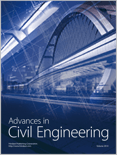
Advances in Civil Engineering
Innovating Infrastructure, Inspiring ChangeAdvances in Civil Engineering is a leading peer-reviewed journal published by HINDAWI LTD, dedicated to advancing knowledge and innovation in the field of civil and structural engineering. Holding an esteemed Q2 ranking in the 2023 category for Civil and Structural Engineering, this journal serves as a vital platform for disseminating cutting-edge research and practical applications that address contemporary challenges in infrastructure development, sustainable design, and material science. Launched in 2008 and operating as an Open Access journal since 2009, it promotes the free exchange of ideas by ensuring that all articles are accessible to researchers, professionals, and students globally. The journal is also indexed in Scopus, ranking at #142 out of 379 in its category, situating it within the 62nd percentile of its peers. With a focus on interdisciplinary collaboration and innovative solutions, Advances in Civil Engineering contributes significantly to the ongoing evolution of engineering practices and education, making it an essential resource for anyone involved in or studying the ever-evolving field of civil engineering.

Frontiers of Structural and Civil Engineering
Shaping the Future of Civil Engineering ResearchFrontiers of Structural and Civil Engineering, published by HIGHER EDUCATION PRESS, is a premier academic journal dedicated to advancing the fields of architecture, civil, and structural engineering. With an ISSN of 2095-2430 and E-ISSN of 2095-2449, this journal caters to the dissemination of high-quality research and innovative practices from 2012 onwards, highlighting important developments up until 2024. Ranked in the top quartile (Q1) for Architecture and Q2 for Civil and Structural Engineering in 2023, it holds an impressive Scopus ranking of #19 out of 189 in Architecture and #101 out of 379 in Civil and Structural Engineering, reflecting its impact and relevance in the scientific community. This journal invites contributions that demonstrate pioneering approaches, fostering collaboration among researchers, professionals, and students alike, and significantly contributes to the global knowledge base in the engineering disciplines.

Advanced Steel Construction
Fostering Collaboration in Steel Research and DevelopmentAdvanced Steel Construction is a prominent journal published by the Hong Kong Institute of Steel Construction, dedicated to the field of structural engineering and material sciences with a specific focus on steel construction techniques and advancements. Since its inception in 2005, the journal has established itself as a valuable resource for researchers, professionals, and students alike, offering insights into the latest developments and innovative practices within the realms of building construction, civil engineering, and materials mechanics. With its recognition as a Q2 journal across multiple engineering categories, including Building and Construction, Civil and Structural Engineering, Mechanical Engineering, and Mechanics of Materials, it ranks competitively in Scopus rankings, highlighting its significance in academic discourse. The journal is based in China, at the Hong Kong Polytechnic University, and provides an essential platform for sharing groundbreaking research and fostering collaboration within the engineering community.